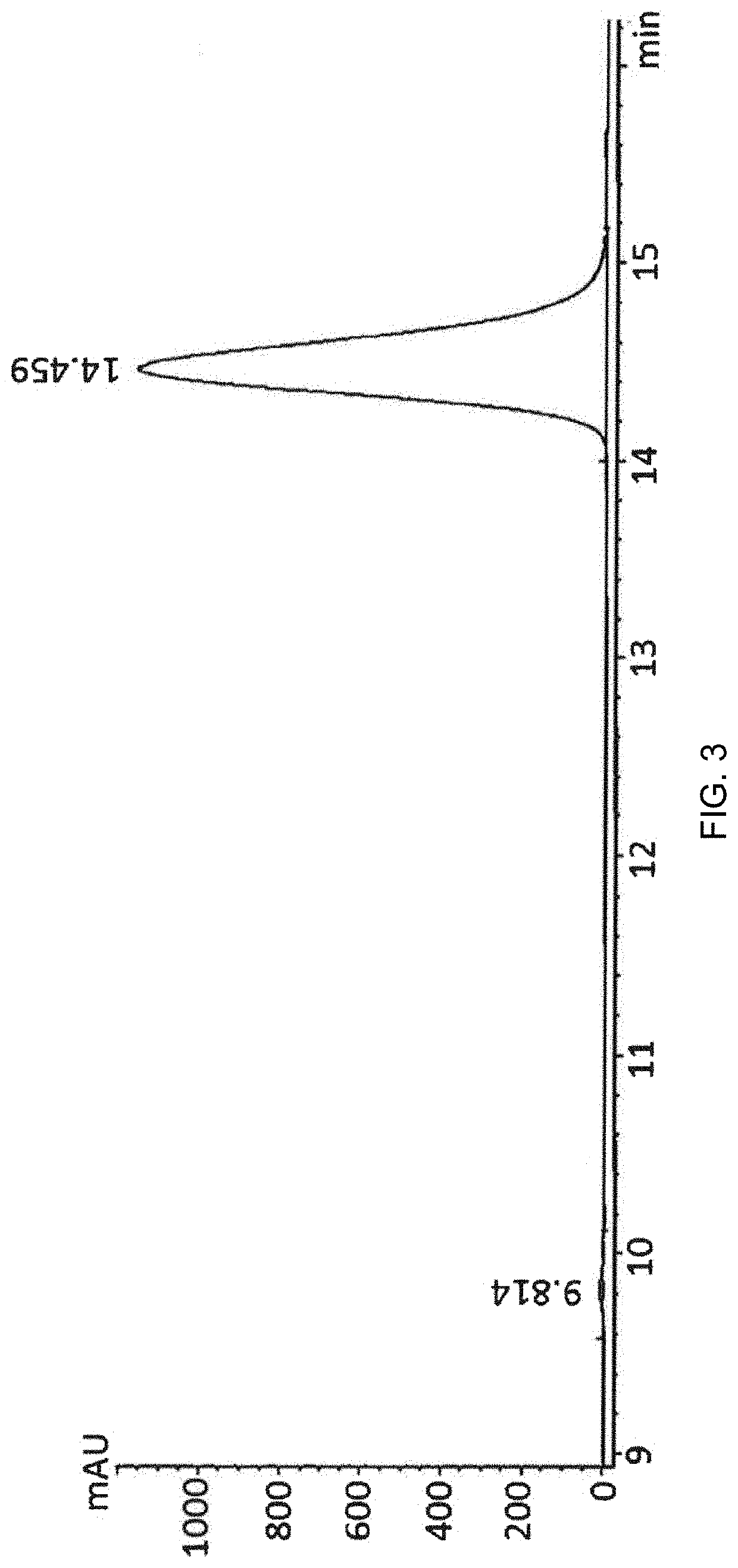Aldosterone synthase inhibitor
a technology of aldosterone and synthase, which is applied in the field of aldosterone synthase inhibitors, can solve the problems of negative stability of active pharmaceutical ingredients, unstable polymorphic forms that affect negatively pharmaceutical efficacy properties, etc., and achieves the effects of increasing and very high aldosterone synthase activity, reducing and very low aromatase activity, and chiral purity
- Summary
- Abstract
- Description
- Claims
- Application Information
AI Technical Summary
Benefits of technology
Problems solved by technology
Method used
Image
Examples
example 1
Diastereomeric Salt Screening with Racemic 5-(p-cyanophenyl)-5,6,7,8-tetrahydroimidazo[1,5-a]pyridine
[0108]100 mg (1.0 eq) of the title compound were dissolved in isopropanol, followed by addition of a solution of chiral acid (0.5 eq) in isopropanol (0.5 mL). The result of the screening is summarized in Table 2.
[0109]
TABLE 2Summary of enantioselective salt crystallization experimentsFormulaChiral acidMWConditionResultL-(+)-Tartaric acidC4H6O610VNo crystallizationCAS: 87-69-4150.095VFormation of0.5eqa gum(−)-O,O′-Dibenzoyl-L-C18H14O8•H2O10VCrystallizationtartaric acid monohydrate376.340.5eqee: 55%CAS: 62708-56-9L-(−)-Malic acidC4H6O510VNo crystallizationCAS: 97-67-6134.095V0.5eqL-(+)-Mandelic acidC8H8O310VNo crystallizationCAS: 17199-29-0152.155V0.5eq(1S-(+)-10-C10H16O4S10VNo crystallizationCamphorsulfonic acid223.305VCAS: 3144-16-90.5eq
example 2
Salt screening with (R)-(+)-5-(p-cyanophenyl)-5,6,7,8-tetrahydroimidazo[1,5-a]pyridine
General Procedure:
[0110]The title compound (free base) was dissolved in ethanol (at 100 g / L) at 35° C., followed by addition of the acid at the same temperature. The resulting mixture was cooled to 10° C. at a cooling rate of −20° C. / h and the precipitate (if any) was filtered off, washed with ethanol and dried under reduced pressure (at 50° C.).
[0111]The result of the salt screening is summarized in Tables 3 to 5.
[0112]
TABLE 3Summary of salt screening experiments with ethanol as solventSalt forming acidStoichiometry (eq)Resultfumaric acid1:1oiltartaric acid1:1solidsulfuric acid1:1oilphosphoric acid*1:1solidadipic acid1:1oilglucuronic acid*1:1no salt isolatedglutaric acid1:1oilmalic acid1:1oilmalonic acid1:1oilfumaric acid1:2solidtartaric acid1:2solidadipic acid1:2oilglutaric acid1:2oilmalic acid1:2oilmalonic acid1:2oil*slurry
[0113]
TABLE 4Summary of salt screening experiments with methanol as solve...
example 3
Preparation of (R)-(+)-5-(p-cyanophenyl)-5,6,7,8-tetrahydroimidazolium[1,5-a]pyridine Dihydrogen Phosphate (Crystalline Form I)
Step 1: Preparation of (R)-(+)-5-(p-cyanophenyl)-5,6,7,8-tetrahydroimidazolium[1,5-c]pyridine dibenzoyl-L-tartrate
[0116]In a 10 L reactor were loaded at 20° C. racemic 5-(p-cyanophenyl)-5,6,7,8-tetrahydroimidazo[1,5-a]pyridine (328 g, =1.0 eq) and ethanol (2.3 L). The mixture was heated to 40° C. then a solution of (−)-O,O′-dibenzoyl-L-tartaric acid (276.4 g, 0.5 eq) in ethanol (1 L) was added. The mixture was maintained at 40° C. for 1 h, then cooled to 20° C. over a period of 2 h, maintained for 1 h at this temperature, then cooled to 10° C. over a period of 0.5 h and finally maintained at 10° C. overnight. The precipitate was subsequently filtered off and the filter cake was washed with cold (0° C.) ethanol (1 L) to afford the title compound as a white humid powder (485 g, =413.7 g estimated dry, by loss on drying, 48.4%, ee=87%).
Step 2: Recrystallization...
PUM
| Property | Measurement | Unit |
|---|---|---|
| enantiomeric excess | aaaaa | aaaaa |
| chiral purity | aaaaa | aaaaa |
| temperature | aaaaa | aaaaa |
Abstract
Description
Claims
Application Information
 Login to View More
Login to View More - R&D
- Intellectual Property
- Life Sciences
- Materials
- Tech Scout
- Unparalleled Data Quality
- Higher Quality Content
- 60% Fewer Hallucinations
Browse by: Latest US Patents, China's latest patents, Technical Efficacy Thesaurus, Application Domain, Technology Topic, Popular Technical Reports.
© 2025 PatSnap. All rights reserved.Legal|Privacy policy|Modern Slavery Act Transparency Statement|Sitemap|About US| Contact US: help@patsnap.com



